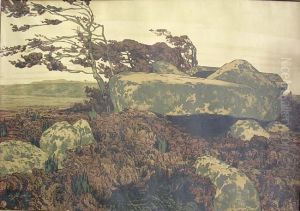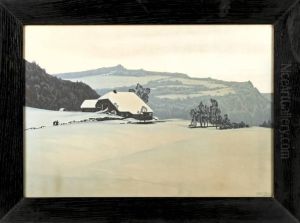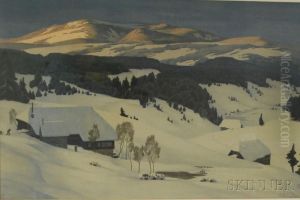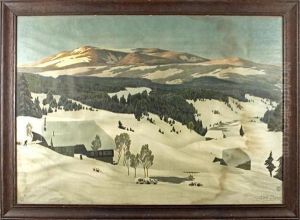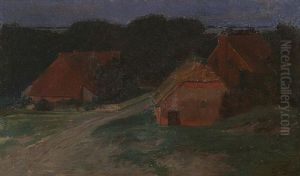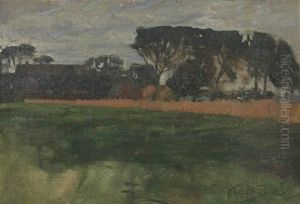Karl Biese Paintings
Karl Biese was a German landscape painter, born in 1863 in Rastenburg, East Prussia, which is now Kętrzyn, Poland. He is particularly known for his portrayal of forest and woodland scenes, capturing the varying moods and lights of nature. Biese's work is often characterized by a strong sense of realism and attention to fine detail, with a focus on the tranquil and serene aspects of the natural world.
Educated in the arts in Königsberg (now Kaliningrad, Russia), Biese honed his skills under the tutelage of established artists of the time. He later moved to Berlin, where he became a part of the city's vibrant arts scene, immersing himself in the cultural milieu of the late 19th and early 20th centuries. Biese's work was well-received during his lifetime, and he participated in numerous exhibitions, gaining recognition among art critics and collectors.
Throughout his career, Biese was influenced by the movements of his time, particularly by the Barbizon school, which emphasized painting en plein air (outdoors), allowing artists to capture the transient effects of light and atmosphere. This influence is evident in the naturalistic qualities of his landscapes, which often feature dense forests, serene lakes, and quiet rural scenes.
Karl Biese's paintings are a part of several art collections and have been displayed in various museums. His legacy lives on through his contributions to the genre of landscape painting, and his works continue to be appreciated for their beauty and technical skill.
Biese's life was one deeply connected to nature, and this connection is reflected in the subjects he chose to paint. He died in 1926, leaving behind a body of work that continues to be admired for its peaceful and pastoral qualities, providing a window into the German countryside of his era.
